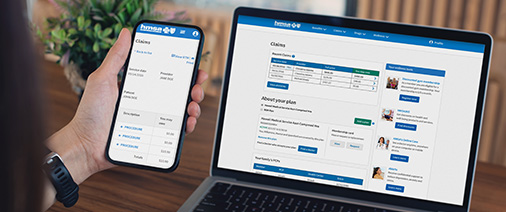The Coronavirus Aid, Relief, and Economic Security Act (CARES Act) is the largest emergency aid package in U.S. history. It was passed by Congress on March 27, 2020, to help those affected by the COVID-19 pandemic. As a health organization, HMSA is committed to doing all we can to help connect our members, providers, and businesses to the financial resources that this legislation provides.
This overview of government programs is provided as a courtesy for general information only. It may not reflect the most up-to-date information, and does not and is not intended to constitute business or legal advice. You should consult your tax adviser, bank, or legal adviser for more information. Some of these programs allow for the inclusion of health care premiums as part of the subsidy.
The SBA Economic Injury Disaster Loan
This loan provides economic relief to small businesses and nonprofit organizations that are currently experiencing a temporary loss of revenue.
Please visit the Small Business Administration (SBA) website1 for more information.
Frequently Asked Questions
Updated
In response to the COVID-19 pandemic, small business owners in every state (plus Washington, D.C., and U.S. territories) are eligible to apply for an EIDL.
Updated
Applicants must be physically located in the United States or designated territory and have suffered working capital losses due to the COVID-19 pandemic. Eligible applicants include:
- Businesses with 500 or fewer employees or defined as small by the SBA.
- Cooperatives with 500 or fewer employees.
- Agricultural enterprises with 500 or fewer employees.
- Most private nonprofits.
- Faith-based organizations.
- Sole proprietorships and independent contractors.
SBA Paycheck Protection Program
The Paycheck Protection Program (PPP) provides loans to help businesses keep their workforce employed during the COVID-19 pandemic. Borrowers may be eligible for PPP loan forgiveness.
Visit the Small Business Administration1 website for more information.
Frequently Asked Questions
Updated
The Paycheck Protection Program is a loan designed to provide a direct incentive for small businesses to keep their workers on payroll. First Draw PPP Loans can be used to help fund payroll costs, including benefits, and may also be used to pay for mortgage interest, rent, utilities, worker protection costs related to COVID-19, uninsured property damage costs caused by looting or vandalism during 2020, and certain supplier costs and expenses for operations.
The Paycheck Protection Program now allows certain eligible borrowers that previously received a PPP loan to apply for a Second Draw PPP Loan with the same general loan terms as their First Draw PPP Loan.
Second Draw PPP Loans can be used to help fund payroll costs, including benefits. Funds can also be used to pay for mortgage interest, rent, utilities, worker protection costs related to COVID-19, uninsured property damage costs caused by looting or vandalism during 2020, and certain supplier costs and expenses for operations.
Updated
The following entities affected by COVID-19 may be eligible:
- Sole proprietors, independent contractors, and self-employed persons.
- Any small business concern that meets SBA’s size standards (either the industry size standard or the alternative size standard).
- Any business, 501(c)(3) nonprofit organization, 501(c)(19) veterans organization, or tribal business concern (sec. 31(b)(2)(C) of the Small Business Act) that:
- Has more than 500 employees, or
- Meets the SBA industry size standard of more than 500 employees.
- Has an NAICS code that begins with 72 (Accommodations and Food Services) that has more than one physical location and employs less than 500 people per location.
Employee Retention Tax Credit
This refundable payroll tax credit is for large and small businesses and nonprofits that retain their employees during the COVID-19 pandemic. The tax credit is equal to 50% of wages and compensation with an overall limit of $10,000 on wages per employee. Payroll costs that can be included as part of the credit can include group health insurance premiums.
The Internal Revenue Service urges employers to take advantage of the newly extended employee retention credit, which is designed to make it easier for businesses that, despite challenges posed by COVID-19, choose to keep their employees on their payroll.
The Taxpayer Certainty and Disaster Tax Relief Act of 2020, enacted Dec. 27, 2020, made a number of changes to the employee retention tax credits previously made available under the CARES Act, including modifying and extending the Employee Retention Credit (ERC) for six months through June 30, 2021. Several changes apply only to 2021, while others apply to both 2020 and 2021.
For more information, visit the IRS website.
Contact information
For help navigating these new programs, you can contact your HMSA account representative.


